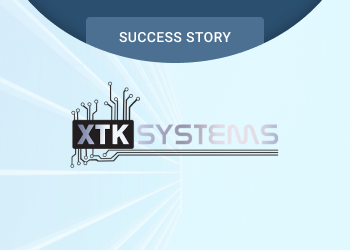When the COVID-19 pandemic first broke out, many companies made the emergency transition overnight to allow their employees to work remotely. Now, two years later, a lot of organizations have realized the benefits that remote work can bring and are looking to maintain it as an option for their employees.
For managed services providers (MSPs), this new remote work trend means that they may have to adapt the way they proceed in supporting their clients, including remote support capabilities. Remote support allows an MSP to access, monitor and repair computer systems via a remote Internet connection, a capability that is essential for remote employees who may be anywhere in the world. This benefits MSP clients who may now have many remote employees, or the MSP themselves, as their own employees may prefer to be remote.
Further reading The Benefits of Remote Support
Having strong capabilities in remote access allows an MSP to more quickly support regular office employees, or servers and other technologies that may be in other locations. By seeing to it that they are following best practices in this area, an MSP can differentiate their services and ensure that they are providing the best support to meet all their customers’ needs.
When it comes to providing remote support, there are several points an MSP should consider as they develop their service package or look to optimize it to deliver the best service to their customers.
Start with Your Team
Building a successful remote support strategy starts with the MSP’s team. Business leaders should make sure they have clear procedures set for their team, including strong action strategies and expectations, as well as key performance indicators (KPIs). This will set the standards for employees delivering remote support, as well as help to align expectations for customers. Education for support agents is the key to ensuring best practices for remote work.
One behavior for an MSP to avoid is micromanaging, a trait that’s tempting in a remote work environment. However, by empowering employees with clear expectations and education, a manager should be able to avoid the bad habit of checking in on employees every hour – something that may alienate your staff and waste valuable time.
Enable Team with Knowledge and Communication
It’s more important than ever for remote employees to have the knowledge they need to perform their jobs effectively, as they can’t simply reach out to a colleague who usually sits at the next desk. For that reason, MSPs should enable their team members with up-to-date knowledge, as well as any other documentation that an employee may need to carry out remote support. Implementing digital communication tools, such as G Suite, Teams, Slack or Zoom, can also help ensure that the communication section remains strong, no matter where individuals are.
Provide the Best Tools and Technology
Just as with any other task, having the right tools can make a significant difference in how remote support can be delivered. MSPs should consider whether their current remote monitoring and management (RMM) systems are allowing their teams to support clients effectively, as well as whether there are other tools they can leverage to improve remote support or collaboration. Investing in technology can also mean making sure that employees have the Internet connectivity they need to carry out support consistently, or access to cloud services to guarantee that the quality of service remains high.
Maintain Strong Customer Communications
Besides ensuring strong communication amongst their own team, MSPs should also take care that they are maintaining clear, consistent and proactive communications with their customers. While communication is always important, it is especially vital in a remote support situation, where MSP employees may not be on site to ensure that they are addressing customer concerns or remaining top of mind throughout the lifecycle of the relationship. An MSP can do this by sending regular reports, staying proactive around any payment reminders, and planning changes by setting up regular touch points for review of services.
While the pandemic may be moving toward its end, remote work is here to stay. This can present a significant opportunity for MSPs who adapt to this trend, both in how they support customers with remote employees and in how their own employees can leverage the benefits of remote work.










